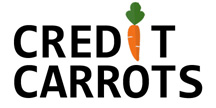Do you want to retire in your 30’s or 40’s? If so, then you might be the perfect candidate for the FIRE movement.
FIRE is an acronym for “Financial Independence, Retire Early.” The main attribute of this movement is hyper-aggressive saving and investing (50-75% of your income) with the goal to retire in your 30’s or 40’s.
The movement is gaining massive appeal as you would get to retire at an age where you still have lots of energy to get out and have fun. The downside is that you likely will not be having that much fun during the saving and investing stage through your 20’s.
Financial Independence, Retire Early
So how does FIRE work, and why do you need to save/invest so much of your income?
Let’s consider some numbers to show why saving/investing 50%-75% of your income is required. These numbers assume expenses are equal to income minus savings, and we are also not accounting for any investment returns.
- At a savings rate of 10%: 9 years of work to save for 1 year of expenses.
- At a savings rate of 25%: 3 years of work to save for 1 year of expenses.
- At a savings rate of 50%: 1 year of work to save for 1 year of expenses.
- At a savings rate of 75%: 4 months of work to save for 1 year of expenses.
If you go big and hit the 75% savings rate, then it would take less than ten working years to save up 25X your annual expenses that is commonly suggested with the 4% rule. Most people aim to get 30X their annual expenses before actually retiring.
If you get raises along the way, and invest wisely then you will have even more money to spend in retirement.
Keys to Success with FIRE
One of the great things about the FIRE movement is that it forces you to have a concrete plan. Here are the common trends that we see with people who have been successful with Financial Independence, Retire Early.
1. Find ways to keep expenses low. This is one of the easiest ways to increase your savings rate. Make sure you take a long hard look at any expense, and ask yourself if it is truly worth it.
2. Find ways to increase your household income. Are there side gigs that you can get into to boost your income? Any extra money you earn can be invested and benefit from compound growth. We have seen many people successfully run a side gig like SEO consulting, Uber, and blogging.
3. Invest wisely. You need to make sure that your hard-earned money is growing. There’s no need for expensive financial advisors, but please make sure that you educate yourself on investing.
4. Know exactly how much you plan on spending in retirement. You need a plan for exactly how much you would like to spend in retirement as this will guide how much of a nest egg you need. More lavish retirements will require more sacrifices while you save up.
FIRE ETF’s
We commonly get asked what ETF’s you should invest your money in if you’re living the FIRE lifestyle.
The key is to find stable ETF’s with low fees. You can put 5% of your investments in higher risk categories like Bitcoin, Meme Stocks, and leveraged ETF’s. If you get lucky, then it could dramatically increase the amount of money you have for retirement. However, make sure that losing the 5% will not derail your plans.
Here are our recommendations on best ETF’s for FIRE:
1. Vanguard S&P 500 ETF (Symbol: VOO). This ETF tracks the S&P 500 index in the United States, and is a good gauge for the overall market.
2. Vanguard Intermediate Bond ETF (Symbol: BIV). TThis ETF tracks the 5–10 year government bond index.
3. Vanguard Long Term Bond ETF (Symbol: BLV). This ETF tracks the long-term investment-grade U.S. bond market.
4. iShares Gold Trust (Symbol: IAU). This investment is for actual gold bullion. The fee on this investment is slightly higher than the others. However, the higher cost makes sense as you’re holding physical gold which needs plenty of security.
5. Invesco DB Commodity Tracking (Symbol: DBC). This fund tracks the prices of over ten commodities including oil, wheat, zinc, natural gas, and soy beans.
For a breakdown of how you should allocate your money between these funds, check out our article on creating your investment portfolio.
We are not financial advisors, and no content on this site should not be taken as financial advice. No guarantee can be made if you invest based on the information provided on this blog. We make no warranty of any kind regarding the blog and/or any content, data, materials, information, products or services provided on the blog.












Leave a Comment